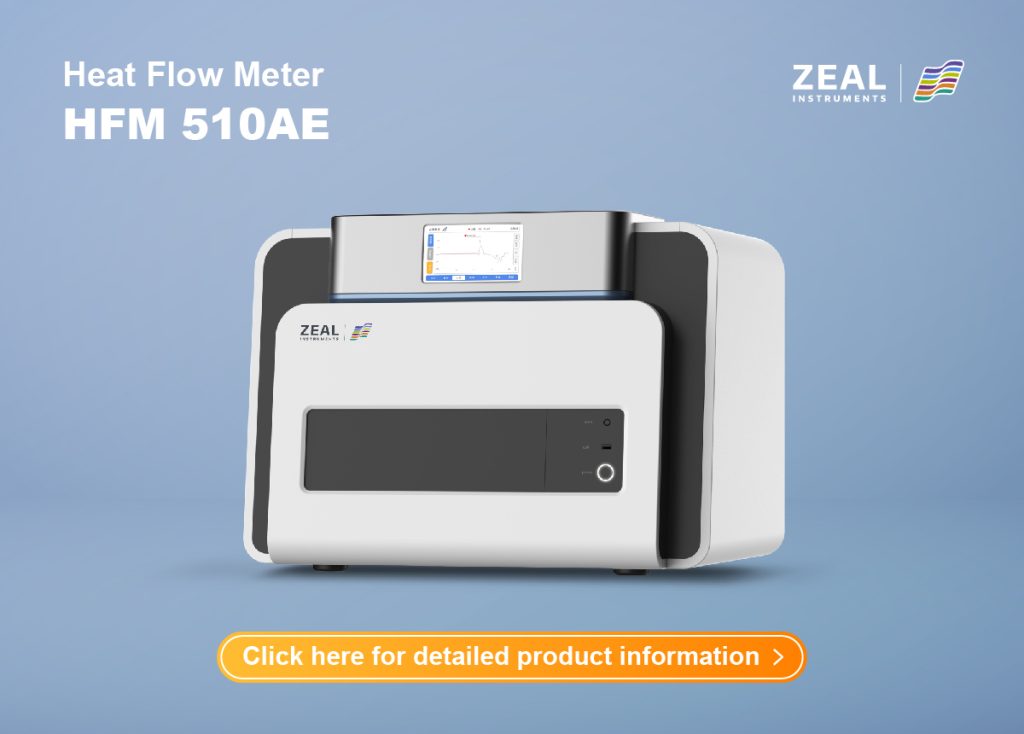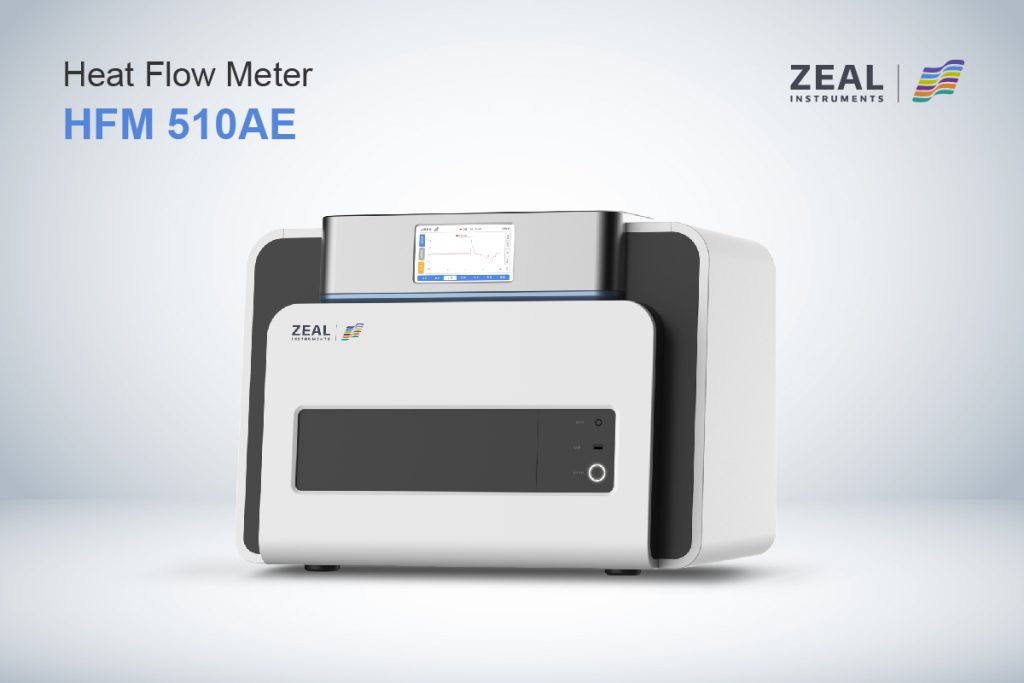Heat Flow Meter: A Vital Tool for Testing Thermal Conductivity
As the worldwide demand for materials that contribute to energy savings continues its upward trajectory, the development and application of cutting-edge insulating materials have become a central theme within both research and technological innovation. A critical parameter used to assess the performance of these insulation materials is their thermal conductivity, which is subject to variation based on numerous factors, such as ambient temperature, material density, pore dimensions, gas-phase pressure, fiber thickness, and moisture content, among others. To measure thermal conductivity with precision and reliability, the Heat Flow Meter is widely recognized as an optimal solution. In this analysis, we will explore the essential principles behind the Heat Flow Meter, the role it plays in evaluating insulation materials, and how it contributes to advancing energy efficiency on a broader scale.

Fundamental Concept Behind the Heat Flow Meter
Test Setup
The operational foundation of a Heat Flow Meter lies in a relatively uncomplicated, yet highly effective, methodology. The procedure involves placing the test material, which is under scrutiny, between two parallel plates. A controlled and steady thermal gradient is created between these plates to facilitate heat flow from the warmer plate toward the cooler one. In this setup, the determination of the material’s thermal conductivity is achieved by accurately measuring the amount of heat entering and exiting the material sample, utilizing heat flux sensors renowned for their high sensitivity.
Establishing Thermal Equilibrium
For results to reflect the true thermal properties of the material, the system must reach a state of thermal equilibrium. Once this steady-state condition is realized, the rate of heat transfer through the sample stabilizes and becomes constant. Armed with precise knowledge of the sample’s surface area and thickness, the Fourier equation for heat transfer can be applied, allowing for the calculation of the thermal conductivity. This mathematical relationship is indispensable for understanding a material’s capacity to either inhibit or facilitate heat transfer, thus offering crucial data for engineers involved in material science and development.
The Necessity of Precision
The Heat Flow Meter’s capacity to deliver highly accurate readings stems from its ability to maintain a consistent thermal gradient and capture heat flux measurements with minimal deviation. Such accuracy ensures that the data obtained is dependable, which in turn offers critical insights into how effectively a material can resist heat flow. These measurements hold particular importance in the production of energy-efficient building materials, where manufacturers rely on such precise data to refine and enhance the thermal properties of insulating products.

Applications and Adherence to Standards
Recommended Equipment: Heat Flow Meter 510AE
The Heat Flow Meter, specifically the Heat Flow Meter 510AE model, stands out as a fully automated testing instrument that complies with international standards such as GB/T 10295, ASTM C518, and ISO 8301. This instrument is ideally suited for testing materials known for their low thermal conductivity, making it an invaluable asset across a wide spectrum of insulation and construction materials. The Heat Flow Meter 510AE has proven its versatility by effectively testing materials like expanded polystyrene, extruded polystyrene, rigid polyurethane foam, mineral wool, expanded perlite, and foam glass, among many others.
Comprehensive Material Compatibility
Beyond traditional insulating substances such as polystyrene and mineral wool, the Heat Flow Meter 510AE extends its testing capabilities to advanced insulating materials including aerogels and vacuum insulation panels (VIPs). Its ability to handle a diverse array of materials—ranging from natural fibers and cork to construction materials like concrete and gypsum—further solidifies its role as an indispensable tool for both researchers and engineers. This wide-ranging compatibility enhances its utility across various industries.
Conformity with International Standards
By adhering to widely recognized global testing standards, the Heat Flow Meter 510AE ensures that the test results it generates are both reliable and universally comparable. Its adaptability to various testing conditions, including its operation over a broad temperature range and low sensitivity to external environmental fluctuations, renders the instrument highly desirable in both research and industrial sectors. This level of compliance is essential for enterprises striving to meet the ever-increasing demands of regulatory building codes and environmental standards.
Advanced Functionalities of the Heat Flow Meter 510AE
Automation for Superior Efficiency
Designed with cutting-edge automation, the Heat Flow Meter 510AE simplifies the testing process, significantly improving both efficiency and accuracy. The automation features encompass the raising and lowering of the heating plate, the automatic measurement of sample thickness, and the regulation of load force during testing. Moreover, automatic control of the temperature and automated operation of the furnace door further minimize manual input, reducing both the time required for tests and the potential for human error during the process.
Dual-Sensor Configuration for Enhanced Accuracy
One of the defining aspects of the Heat Flow Meter 510AE is its incorporation of dual heat flux sensors. This dual-sensor arrangement significantly boosts the precision of the thermal measurements, ensuring that the heat flux entering the material and that exiting it are both meticulously captured. The independent temperature control functionality for the upper and lower plates enables the system to maintain precisely controlled conditions, thereby ensuring consistent and repeatable heat flux measurements during each test.
Adaptive Testing for Complex Samples
The Heat Flow Meter 510AE is equipped with adaptive testing capabilities, which allows it to handle samples that possess uneven or irregular surfaces—often a challenge in thermal conductivity measurement. In addition, it includes molds designed for particle sample preparation, simplifying the preparation process for more intricate material structures. Its software’s ability to support offline operation and incorporate extension modes for thermal conductivity testing adds further flexibility, making it a highly versatile instrument for both laboratory research and industrial applications.
Data Management and User Interface Capabilities
Real-Time Data Monitoring and Automated Collection
The importance of accuracy in data collection is paramount, but equally critical is the manner in which that data is organized, monitored, and processed. The Heat Flow Meter 510AE addresses these needs with fully automated data collection systems that enable researchers and engineers to monitor key testing parameters in real time. Any fluctuations in heat flow or anomalies can be immediately observed, while the system’s software facilitates the rapid generation of comprehensive test reports, saving time and providing prompt access to essential data for further analysis.
Access to Historical Data and Custom Export Options
A notable feature of the Heat Flow Meter 510AE is its ability to store and retrieve historical test data. The system enables users to log in, query past test results, and export data in various customizable formats for deeper analysis or presentation. This feature is particularly beneficial for long-term research projects, where tracking the evolution of a material’s thermal performance over extended periods is vital.
Built-in Industrial Computer with Peripheral Connectivity
To further enhance its ease of use, the Heat Flow Meter 510AE comes with an integrated industrial computer, which eliminates the need for external hardware connections and simplifies the overall setup. However, for those requiring additional peripherals, the system offers expansive connectivity options, allowing devices such as keyboards, mice, and printers to be easily connected. This capability ensures that users can operate the system seamlessly and efficiently and export the data they collect.
Combining Design and Functionality
User-Centric Interface
In designing the Heat Flow Meter 510AE, careful consideration was given to the user experience. The system includes an intelligent human-machine interface (HMI) accessible via a high-definition touchscreen display, making navigation intuitive and reducing the learning curve for users unfamiliar with the technology. By simplifying system controls, the interface ensures that tests can be performed swiftly and efficiently, even by those with minimal training.
Modern Industrial Design
While functionality is at the forefront, the Heat Flow Meter 510AE does not compromise on design aesthetics. Featuring a sleek, modern appearance, the system is a testament to the convergence of form and function. The aesthetically pleasing design, coupled with its cutting-edge technology, makes it a standout addition to any laboratory or industrial facility.
Conclusion
The role of the Heat Flow Meter, particularly the Heat Flow Meter 510AE, in determining the thermal conductivity of insulation materials cannot be overstated. As the demand for sustainable, energy-efficient building materials continues to grow, accurate and reliable measurements of thermal conductivity are essential for optimizing the performance of insulating materials. The Heat Flow Meter 510AE, with its advanced automation, precision, and adherence to international standards, stands as an indispensable tool for researchers and manufacturers alike, representing a key component in the ongoing effort to improve energy efficiency across various industries. For those in need of a dependable and efficient solution, Hangzhou Zeal Instruments Science & Technology Co., Ltd. offers the Heat Flow Meter 510AE, an instrument specifically designed to meet the evolving needs of today’s research and industrial environments.






































